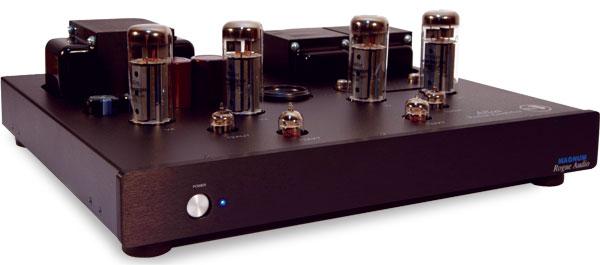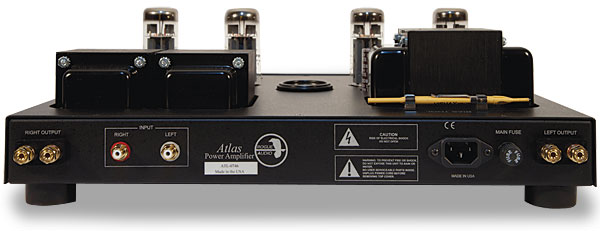| Columns Retired Columns & Blogs |
NIce amp, But I really want to see a photo of that donut.

After recovering from diabetic shock, I said a few Hail Marys as penance for my caloric sins and began my walk home. Three blocks later, I heard drums and yelling—not unusual sounds for Portland, but this seemed an uncommon amount of commotion. When I turned the next corner, I found myself smack in the middle of an Occupy Portland march on US Bank. Marchers were holding signs and shouting chants at bystanders—and much worse at the police, who were calmly clearing traffic for the demonstration.
It was the first time I'd seen the Occupy movement in person. The frustration and anger of these marchers was palpable as their shouts and drums echoed through downtown Portland, but I wondered if this way of protesting was really effective: I saw 2000 people yelling that day, but almost no one listening. While there may be a time for shouting and anger, I believe that real change comes from those who actually do something to make the world a better place.
As I scan the audio chat rooms on the Internet, I see a similar anger directed at the ultra-high-priced gear that right now is so in vogue among manufacturers and the audio press. Many audiophiles justifiably feel disenfranchised of their hobby when they see no way they could ever afford a music system costing half a million dollars. I've wanted to do something about the industry's recent overfocus on the ultra-high-end market. To that end, I've tried to review products that are either actually affordable, or that offer high levels of performance at moderate prices. And when the moderately priced or expensive gear hasn't offered enough value to justify its price, I've said so in my reviews.
In short, I'm trying to find ways to make hi-fi a hobby for everybody. The components I review may not be affordable for the 99%—hi-fi isn't as cheap as a Voodoo doughnut—but I'm at least trying to pick models that could be purchased by the 80%. Don't get me wrong: I think it's great that some people can afford $120,000/pair speakers. But I also think it's great when a friend spends $2000 on an amplifier and gets musical enjoyment that more than justifies the price of admission. That's why I wanted to review Rogue Audio's Titan Atlas Magnum power amplifier.
Atlas At Last
The Atlas, part of the Titan series, is the least expensive amp Rogue Audio makes. Like the other Rogue amps, the Atlas is designed and built by Mark O'Brien and his team in Brodheadsville, Pennsylvania, a small town halfway between Allentown and Scranton. That's in America, y'all, the U. S. of A. In its stock form, the Atlas has four EL34 output tubes (two per channel), is rated at 55Wpc, costs $1595, and was reviewed by Fred Kaplan in March 2007 (when it cost $1395). However, after my positive experience with the M-180 upgrade of my Rogue M-150 monoblocks (see my review in the December 2010 issue), I opted to review the Atlas in its upgraded Magnum version ($1995).
I asked Mark O'Brien to explain the philosophy of the Titan Magnum upgrades. "Our most affordable components are built to fairly stringent price points that don't always allow for some of the more exotic components to be used in their construction," he said. "In my opinion, the actual circuit design and implementation is far and away the most important part of a given design, so that is always the fundamental basis for any of our products. That said, once the design has been realized, the addition of larger power supplies, better tubes, and ultra-high-performance components usually results in worthwhile sonic improvements. Since this comes at a cost that may not be desirable to some customers, we offer it as an option. Many customers who are on a budget opt for the basic version and then get their unit upgraded later." Indeed, you can upgrade your stock Titan Atlas to Magnum status for $650.
For the Atlas, the Magnum upgrade includes larger and better power supplies, polypropylene bypass capacitors, Dale-Vishay resistors in critical spots, better binding posts, gold tube sockets, and superior small-signal tubes. The Magnum upgrade also includes more robust output tubes exclusively run in Ultralinear mode. You can choose between the KT90 and KT120 output tubes. The KT90, for instance, which is what was fitted to the review sample, jacks the Atlas Magnum's output power to 90Wpc—a significant increase over the standard Atlas's 55Wpc. Rogue has not yet specified a rated output power for the Atlas Magnum using KT120 tubes; we'll see what John Atkinson's measurements turn up.

The Atlas Magnum's output transformers each have two output taps, optimized for 4 or 8 ohms. To change the taps, you remove the Atlas's top and switch a wire to the positive terminal on each channel as described in the manual. I listened to the Magnum with its taps set to 4 ohms, which has worked well with every tube amp I've paired with my Revel Performa F30 loudspeakers.
Adjusting the bias of the Atlas Magnum's four output tubes is easy: in the center of the top plate is a large meter, and a switch to insert that meter in each tube's circuit can be found under a removeable panel adjacent to the meter. Individually setting each tube's bias means that the user can replace a single tube and then match it to the rest, instead of having to buy a matched pair every time a tube goes kaput. The Magnum accepts only single-ended inputs.
The fit and finish of the Titan Atlas are in keeping with those of other Rogue models, and with other tube amps in the <$2000 price range. The styling won't win any awards, but the Atlas's looks are honest and straightforward, tasteful if not inspiring. Like some people I've met, the Atlas looked best in the dark, when its eight warmly glowing tubes were prominently displayed. At 18" wide by 5.5" high by 17" deep, the Atlas Magnum is a bit of a wide load. I mention this only because it's the sort of amp you might think of putting in your rack instead of on an amp stand. Just make sure you have enough room to accommodate the Atlas's generous width and depth.
These are a few of my favorite tubes
Setup was a snap. Attach the power cord (I used my fancy Sain Line Systems Reference rather than Rogue's), attach the speaker cables and interconnects, and turn the puppy on. The tube bias settled down after the first hour or so of playing and needed only minor adjustments thereafter. Rogue claims that every amp they sell is "Fully tested, burned in, and auditioned." Nonetheless, I let the Titan Atlas Magnum burn in for 100 hours or so before I did any serious listening.
I began that listening with the Electro Harmonix KT90 output tubes in place. I was immediately struck by the amplifier's slightly dry, snappy sound with those tubes. The Talking Heads' live album Stop Making Sense (CD, Sire 47489-2) had plenty of drive and rhythm via the Rogue. Tina Weymouth's ostinato bass line in "This Must Be the Place (Naïve Melody)" propelled this lovely song forward via the Atlas, while David Byrne's voice had nice dynamic projection in that special way a live recording captures a close-miked voice. Though a small tube amp, the Atlas had some balls—but there were limits. Full-range classical music, such as Rautavaara's Symphony 7, Angel of Light, as performed by Leif Segerstam and the Helsinki Philharmonic (CD, Ondine ODE 869-2), was rendered a bit smaller than life—but hey, I've never heard an audio system that has reproduced an orchestra's full weight and scale.
Though I liked the sound of the KT90 tube when I first met it, in my reference Rogue M-180 monoblocks, I've sort of fallen out of love with it. Though it has superior drive and pacing and low-bass extension, I now hear the KT90 as having a dry midrange, a lean midbass, and a treble that's extended but ever so slightly grainy. It's a very nontubey-sounding tube. Plugged into the Atlas Magnum, the four KT90s offered pretty much that signature sound. It was time to try something different.

NIce amp, But I really want to see a photo of that donut.


Someone needs to start Occupy Audio!
Music reproduction for the people.